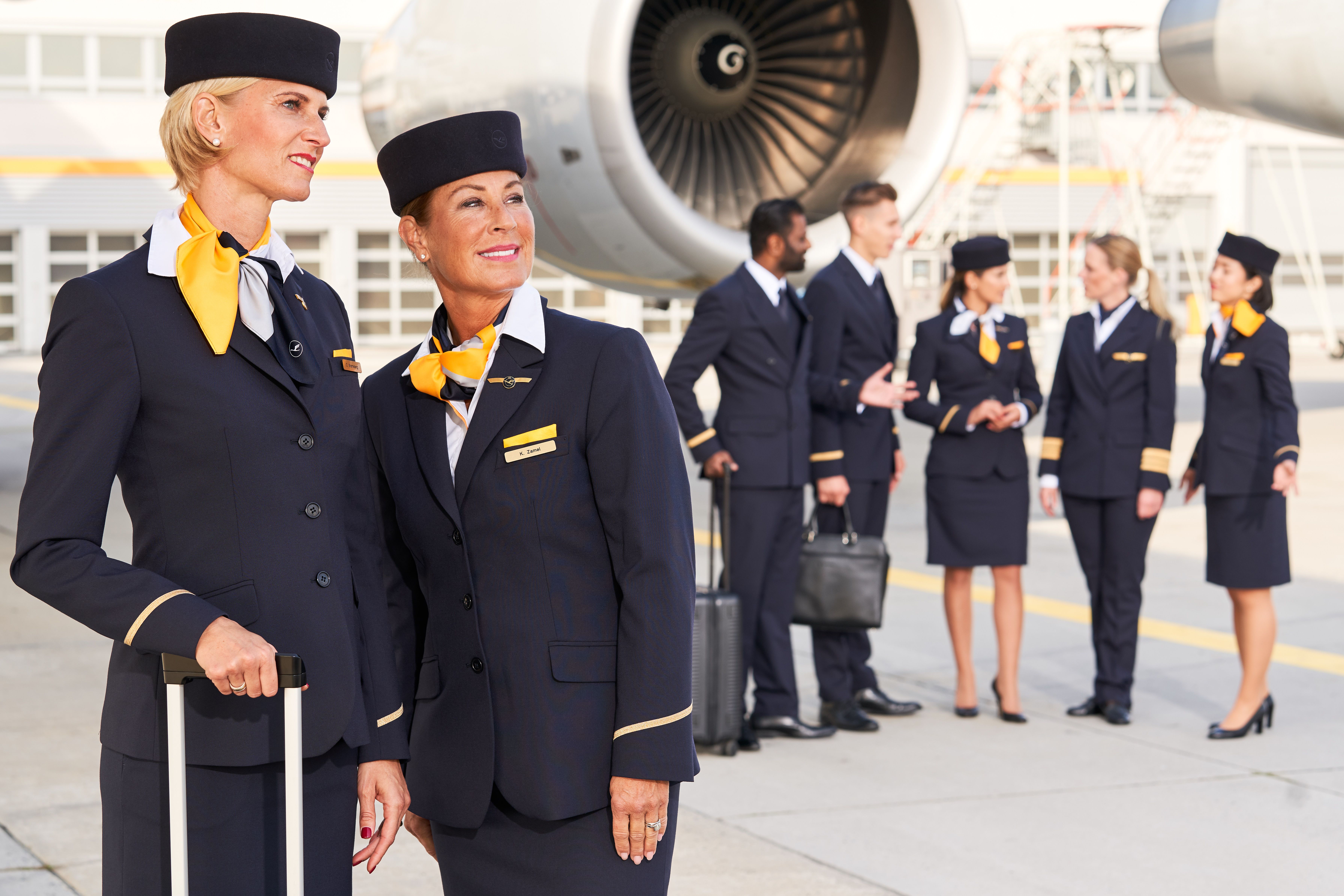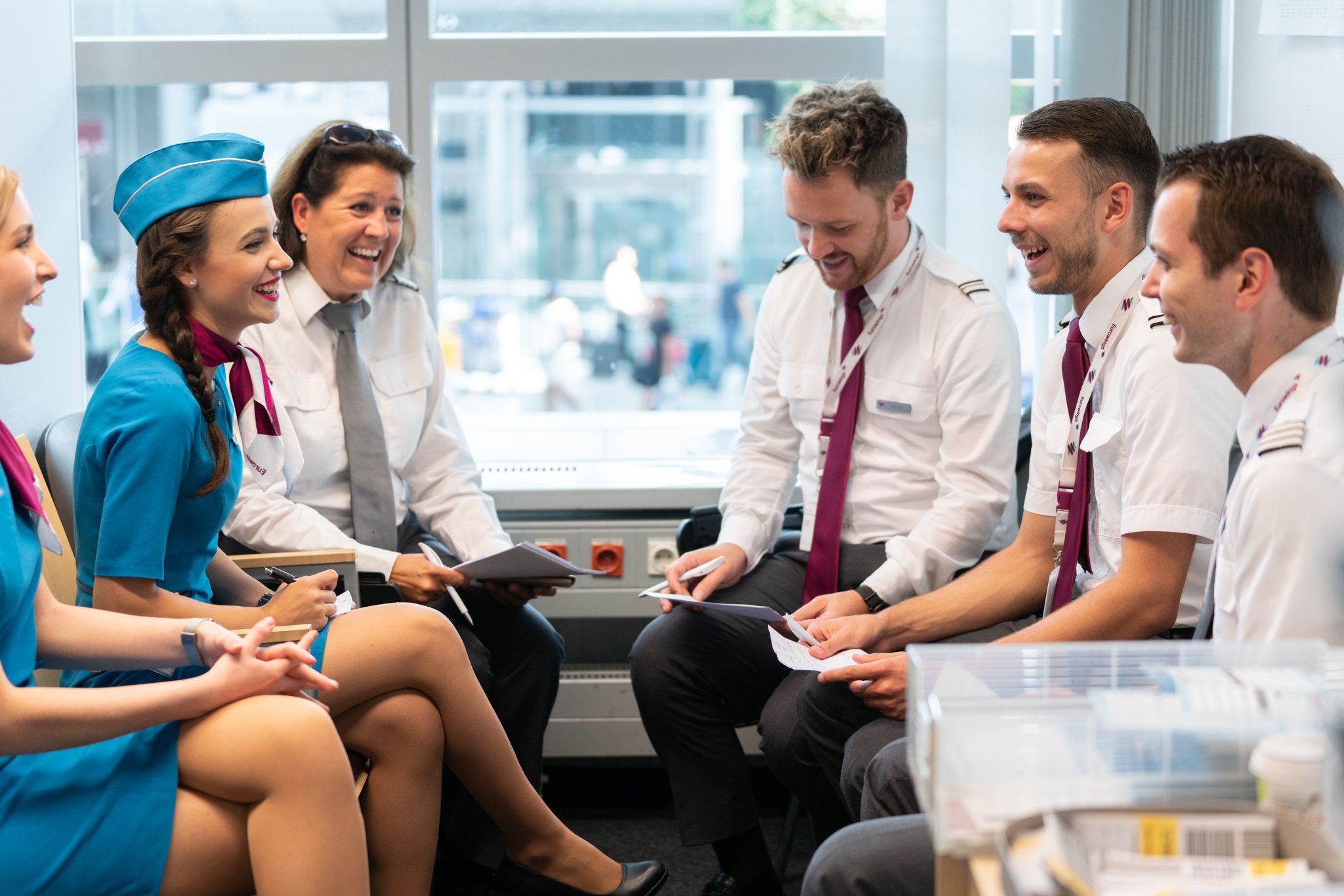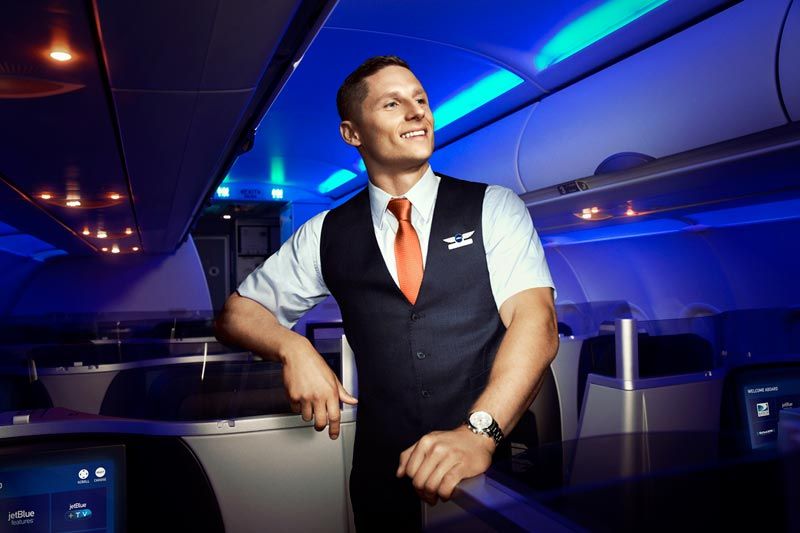The senior cabin crew member (SCCM) is a standard term for the 'in charge' crew member onboard an aircraft with more than one crew member. Sometimes airlines have their own name for the role, such as inflight service manager or cabin services director. The role is very important in terms of the 'chain of command' onboard, reporting to the flight deck and supervising the cabin crew in the cabin.
In brief
The SCCM is responsible for the safety of the passengers, cabin security, and the team's customer service. It is a managerial role, so previous flight attendant experience is necessary. The amount of experience needed can vary between airlines but usually depends on how long they have been with their airline. Larger aircraft types, like the Boeing 787 or Airbus 380 also have pursers, or inflight supervisors to manage different areas of the aircraft. In this case, the SCCM will have overall charge of the cabin. The SCCM takes their position at the front left exit door and is usually identified by wearing a different color of the uniform or accessories such as a scarf or tie.
Pre-flight
The SCCM will speak with the flight crew and operations to confirm the conditions of the flight that day. This will include information about the flight, the weather, expectations of turbulence or delays, and flight time. They will also discuss special instructions regarding safety and emergency procedures. They will also find out how many passengers there are onboard and if there are any passengers who need assistance. There may be additional information from operations about the layover hotel and safety advice for the crew.
Crew briefing
The SCCM leads the cabin crew briefing for the flight. During the briefing, they will communicate the flight information collected earlier to the cabin crew and assign working places based on seniority. Safety and emergency procedures and first aid are reviewed, usually with the cabin crew being asked questions individually. They will also check that grooming meets airline standards. Special meals, passengers who need assistance, and anything else unusual on the day will be discussed, and they will plan the service flow.
Onboard
Once onboard the aircraft, the SCCM supervises the security and safety equipment checks of the cabin crew. They must also check meals, bar carts and duty-free and make sure that the numbers tally with the paperwork. Once all reviews are complete, boarding can commence. The SCCM communicates all information as necessary to the flight crew at each stage throughout the flight, including the arming/disarming of the doors. Once the cabin crew have checked and secured the cabin, the SCCM will call the flight deck to 'cabin secure'.
During the flight
The SCCM supervises the cabin crew team for service flow and usually works in business or first class for the meal and beverage service. They are also responsible for flight deck security and communication between the cabin and flight deck. Any conditions, such as turbulence, will be notified to the SCCM, who then communicates with the cabin crew.
If any unusual events occur, such as a passenger needing medical help or there is an unruly passenger, this will be relayed to the flight deck by the SCCM. They will also complete 'cabin secure' checks before landing and disarm the doors.
Discover more aviation news.
Post-flight
After disembarking, the SCCM completes any paperwork and forms as necessary for the flight. Security checks are completed and reported via SCCM to the flight deck and meal carts are offloaded. Once all the checks have been completed in the cabin and the paperwork is done, the crew prepare to take the aircraft back to base and operate the return flight (short-haul flight). On a long-haul flight, the crew then leave the aircraft and continue with their layover.



